#ar vr development services
Text
#theintellify#mobile application development#web application development#cloud consulting services#augmented reality#virtual reality#ar vr technology#arvr#ar vr development company#ar vr development services
2 notes
·
View notes
Text
0 notes
Text

AR VR Development Services | AR VR Development Company
0 notes
Text
The Ultimate Guide to Virtual Reality Software for Architecture

In the ever-evolving world of architecture, staying at the forefront of technology is paramount. One such technological advancement that has revolutionized the architectural industry is virtual reality (VR). Virtual reality architecture software has ushered in a new era of design, presentation, and client engagement. In this comprehensive guide, we'll explore the world of virtual reality architecture software, its benefits, and a spotlight on ProtoTech Solutions as a leading player in the field.
Understanding Virtual Reality Architecture Software
Virtual Reality (VR) is a technology that immerses users in a computer-generated environment, allowing them to interact with and navigate through it as if it were real. In architecture, VR software leverages this technology to create immersive 3D environments of architectural designs and spaces.
Key Features of Virtual Reality Architecture Software
1. Immersive Visualization: VR software provides architects, designers, and clients the ability to walk through a building or space as if they were physically present. This immersive experience enhances design comprehension.
2. Real-time Collaboration: Many VR architecture tools offer real-time collaboration features, allowing multiple stakeholders to review and make decisions on designs simultaneously, no matter where they are located.
3. Design Iteration: VR software enables architects to make real-time changes to designs, which can be immediately visualized, facilitating rapid design iteration and decision-making.
4. Client Engagement: Using VR during client presentations is a powerful way to convey design concepts, helping clients understand and feel the space before it's built.
5. Data Integration: Some VR solutions integrate with Building Information Modeling (BIM) software, enabling architects to import 3D models and data for a seamless design-to-VR workflow.
Benefits of Using Virtual Reality Architecture Software
1. Enhanced Design Communication
VR software bridges the gap between architectural drawings and the client's understanding of the design. Clients can "walk" through the virtual space, gaining a comprehensive understanding of the project, reducing miscommunication, and enhancing the decision-making process.
2. Streamlined Design Review
Design teams and clients can collaborate in real-time within the virtual environment, making changes and annotations directly in the 3D model. This streamlines the design review process and ensures everyone is on the same page.
3. Reduced Costs
By identifying design flaws and issues early in the process, VR architecture software can help avoid costly revisions during construction. It also allows for better design optimization, potentially reducing construction costs.
4. Competitive Advantage
Architectural firms that adopt VR technology gain a competitive edge by showcasing their projects in immersive, engaging ways. It can impress clients and help secure new projects.
Spotlight on ProtoTech Solutions
ProtoTech Solutions is a renowned name in the world of virtual reality architecture software. As a leader in this field, ProtoTech Solutions offers a range of innovative solutions tailored to the needs of architects and designers.
ProtoTech's Virtual Reality Software Features
1. Immersive VR Experiences: ProtoTech's VR solutions provide highly immersive experiences, making it easy for clients and stakeholders to visualize architectural designs.
2. Cross-Platform Compatibility: ProtoTech offers VR solutions that work seamlessly across multiple platforms and devices, including VR headsets, desktops, and mobile devices.
3. BIM Integration: ProtoTech's VR software can integrate with popular BIM tools, enabling architects to import complex 3D models and data effortlessly.
4. Real-time Collaboration: ProtoTech's collaboration features allow architects and clients to review and modify designs in real-time, improving communication and decision-making.
Why Choose ProtoTech Solutions?
Expertise: ProtoTech Solutions has a team of skilled professionals with extensive experience in VR development and architecture.
Customization: They offer tailored solutions to match the unique needs of architectural firms and construction companies.
Proven Track Record: ProtoTech has a strong track record of delivering high-quality VR solutions for the architecture industry.
Support and Training: ProtoTech provides comprehensive support and training to ensure users can maximize the benefits of their VR software.
In conclusion,
virtual reality architecture software has redefined the way architects design, collaborate, and present their projects. With ProtoTech Solutions at the forefront of this technological revolution, architects and designers have a trusted partner to help them unlock the full potential of VR in their work. Embrace the power of virtual reality and stay ahead in the world of architecture.
#virtual reality software for architecture#ar vr app development#ar vr app development services#ar vr development services#3d virtual reality software#virtual reality app development#virtual reality applications development#vr app development services#vr software for architecture#virtual reality project management#virtual reality software architecture#vr application services#augmented reality software architecture#virtual reality architecture software#augmented reality android development
0 notes
Text
AR VR Development Services | Expert Augmented & Virtual Reality Solutions
Our AR VR development services offer cutting-edge solutions for businesses seeking to incorporate immersive technology, driving customer engagement and boosting productivity.
#AR VR Development Services#best digital marketing company india#business consulting firm#company for digital marketing#snowflake developers#salesforce consultants#ar vr development company#website redesign#servicenow#digital transformation#saphana
0 notes
Text
Augmented Reality (AR) NFTs
Augmented Reality (AR) NFTs are becoming increasingly popular with brands due to their ability to help increase revenue. The NFT turnover in the first six months of 2021 was more than $2.4 billion. The NFT market has grown by 10 times in the last two years. The story of NFT development is only just beginning.
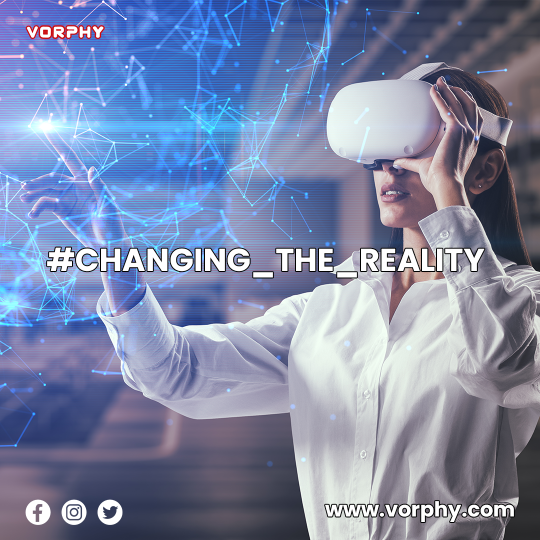
This article will help you understand the growing trend of Augmented Reality (AR) NFTs and suggest ways your brand can get involved. You will learn about AR NFT, the different types of AR projects, their key benefits, how Vorphy AR cards can be used to power these projects, and more.
Understanding NFT and how it works
NFT stands for Non-Fungible Token. Non-fungible items are unique and cannot be copied or replaced. When you create an NFT, you are creating a piece of code that is stored on the blockchain and attached to an asset. It is not the asset itself that is important, but the potential return on it. When you purchase an NFT item, you are paying for the right to own a digital asset. A unique identifier makes it easy to verify the authenticity and makes it impossible to falsify. You invest in the design and aesthetics of your products.
If you create and sell an NFT, the copyright still belongs to you. You have associated your name or brand with an NFT. How you back the value of security is important. What types of objects can be turned into NFTs? There are no limits to what you can imagine. Photos, images, music, paintings, videos, digital content, and augmented reality content all qualify as NFTs.The last space is the most lucrative for brands and we're interested in it. What makes AR NFTs unique is that they can be used for a variety of purposes, beyond just being stored on a blockchain. What exactly are Augmented Reality NFTs? Augmented reality NFTs are digital objects that are uploaded to the NFT marketplace. They receive unique identifiers that make them easily identifiable. This way, you can create and control almost any type of augmented reality content. AR NFTs can be either simple 3D objects or more complex AR experiences with sound and dynamic visual effects.
NFT and Augmented Reality: A marketplace
Brands are starting to see augmented reality as an effective way to market their products because it can provide a more immersive experience for their customers. Consumers are starting to get more comfortable with AR technology, and are using it more thoughtfully because of its existence. In this state, the AR NFT market is very lucrative to join. Brands must constantly follow the latest trends in order to gain attention. Stronger reactions are better, right? There are other types of campaigns too. They will help you increase brand awareness and attract followers through new PR channels. Lil Miquela raised over $82,000 through the use of NFTs to support the Black Girls Code project. NFTs drive attention and attention motivates action. AR technology is developed and has been found to be economically viable. This makes it a good investment for businesses. AR marketing campaigns are very effective at attracting customers, while virtual try-on and Web AR tools can help increase sales.
People's social status is based on their civic position, attitude to the problems, and their stickiness to a brand. All you need to do to get people's attention with your AR-powered image is to create something visually striking. AR connects the digital and real worlds, making it easy to interact with both. If your brand is represented online, it's natural to use NFTs. NFTs work well in conjunction with augmented reality, which opens up new markets, revenue streams, and audiences to engage with. Cryptocurrency, video games, and digital self-expression are all great ways to add value to AR NFTs. This can be done through face filters, virtual clothes, accessories, or anything else. Augmented Reality (AR) is more than just hype. It has the potential to change the way we shop and create online.
#augmented reality#ar vr companies#ar vr app development#ar vr services#ar vr development company#ar vr technology#NFTs AR
2 notes
·
View notes
Link
#dark rides manufacturer#simulator rides manufacturer#VR game development company#AR game development company#services#united state
2 notes
·
View notes
Text
Exploring the Newest Trends in Game Design and Development

Game Design and development are constantly evolving, driven by rapid technological advancements, shifting consumer preferences, and groundbreaking design philosophies. Recent years have introduced a multitude of new trends transforming the gaming landscape. From the surge of augmented reality (AR) and virtual reality (VR) to the growing focus on inclusivity and accessibility, these trends are enhancing the gaming experience and expanding its appeal to a wider audience. 3D game development company is pivotal in advancing visual fidelity and creating immersive experiences. In this blog, we'll explore some of the most exciting and influential trends in game design and development today.
1. Augmented Reality (AR) and Virtual Reality (VR)
Augmented Reality (AR)
AR technology overlays digital content onto the real world, providing an immersive experience that enhances users' interaction with their environment. A prime example of AR in gaming is Pokémon GO, which became a global sensation in 2016. AR games are popular for seamlessly blending real-world and digital experiences.
Location-based gaming: Games like Pokémon GO and Ingress use geolocation to create dynamic gaming experiences that encourage players to explore their surroundings.
AR in mobile gaming: With smartphones equipped with powerful cameras and sensors, AR has found a natural home in mobile gaming. Developers are leveraging ARKit (Apple) and ARCore (Google) to create innovative AR games.
Virtual Reality (VR)
VR technology immerses players in a fully digital environment, offering a more interactive experience than traditional gaming. As VR headsets become more affordable and accessible, VR gaming is gaining momentum.
Immersive storytelling: VR enables deeper storytelling by placing players directly into the narrative. Games like Half-Life: Alyx and Beat Saber demonstrate VR's potential to deliver unique and engaging experiences.
VR multiplayer experiences: Social VR platforms like VRChat and games like Echo VR allow players to interact with others in a virtual space, fostering a sense of community and shared experiences.
2. Cloud Gaming
Cloud gaming, or game streaming, lets players access and play games on various devices without needing powerful hardware. This trend is revolutionizing game distribution and accessibility, making high-quality gaming experiences more widely available.
Major platforms: Services like Google Stadia, NVIDIA GeForce Now, and Microsoft xCloud lead the cloud gaming charge, offering a broad range of games streamed directly to devices like smartphones, tablets, and low-end PCs.
Subscription models: The rise of subscription-based gaming services, such as Xbox Game Pass and PlayStation Now, gives players access to extensive game libraries for a monthly fee, lowering the barrier to entry for gaming enthusiasts.
3. Inclusivity and Accessibility
The gaming industry increasingly recognizes the importance of inclusivity and accessibility, striving to make games enjoyable for everyone, regardless of their abilities or backgrounds.
Accessible game design: Developers are incorporating features like customizable controls, text-to-speech options, and visual and audio aids to make games more accessible. Notable examples include The Last of Us Part II, which offers a comprehensive suite of accessibility options.
Diverse representation: Games are featuring more diverse characters and storylines, reflecting a broader range of experiences and perspectives. Titles like Spider-Man: Miles Morales and Tell Me Why lead the way in this regard.
4. Procedural Generation and AI
Procedural generation and artificial intelligence (AI) are transforming game development by enabling the creation of dynamic and unpredictable game worlds.
Procedural generation: This technique uses algorithms to create game content on the fly, resulting in unique and varied experiences for each playthrough. Games like No Man's Sky and Hades utilize procedural generation to create expansive, ever-changing environments and levels.
AI-driven NPCs: Advanced AI is used to develop more realistic and intelligent non-player characters (NPCs). These NPCs adapt to player actions, making the gaming experience more engaging and challenging. For example, the AI in Middle-earth: Shadow of Mordor’s Nemesis System creates dynamic interactions and rivalries with NPCs based on player behavior.
5. Cross-Platform Play
Cross-platform play allows gamers to play with others across different gaming systems, such as consoles, PCs, and mobile devices. This trend breaks down barriers and fosters a more inclusive gaming community.
Popular cross-platform games: Titles like Fortnite, Minecraft, and Call of Duty: Warzone support cross-platform play, enabling friends to connect and compete regardless of their preferred gaming device.
Unified gaming communities: Cross-platform play helps unify gaming communities, creating larger and more vibrant player bases and reducing fragmentation.
6. Indie Game Renaissance
The indie game scene is thriving, with independent developers pushing the boundaries of creativity and innovation. These games often explore unique concepts and gameplay mechanics that mainstream titles may not.
Successful indie titles: Games like Hades, Celeste, and Among Us have achieved critical and commercial success, proving that indie games can compete with big-budget productions.
Supportive platforms: Digital distribution platforms like Steam, itch.io, and console marketplaces provide indie developers with the tools and exposure needed to reach a global audience.
7. Evolving Monetization Models
Monetization strategies in gaming are continually evolving, with developers experimenting with new ways to generate revenue while maintaining player engagement.
Free-to-play (F2P) games: F2P games, supported by microtransactions and in-game purchases, have become increasingly popular. Titles like Genshin Impact and Fortnite offer high-quality experiences without an upfront cost, attracting large player bases.
Battle passes: Many games now offer battle passes, providing players with a progression system and exclusive rewards for a fee. This model has been successfully implemented in games like Fortnite, Apex Legends, and Call of Duty: Warzone.
8. Environmental Storytelling and Immersive Worlds
Game developers are focusing on creating rich, immersive worlds that tell stories through the environment itself, rather than relying solely on dialogue and cutscenes.
Environmental storytelling: Games like The Legend of Zelda: Breath of the Wild and Dark Souls use environmental cues and subtle details to convey the lore and history of their worlds, encouraging players to explore and piece together the narrative.
Open-world design: Open-world games are becoming more intricate and detailed, offering players the freedom to explore vast landscapes at their own pace. Titles like Red Dead Redemption 2 and Cyberpunk 2077 exemplify this trend with their meticulously crafted environments and immersive experiences.
9. Social and Community-driven Games
Social interaction and community engagement are becoming integral parts of the gaming experience, with games designed to foster collaboration and communication among players.
Cooperative gameplay: Games like It Takes Two and Sea of Thieves emphasize cooperative gameplay, requiring players to work together to overcome challenges and achieve goals.
User-generated content: Platforms like Roblox and Dreams allow players to create and share their own game content, fostering a sense of community and creativity.
10. Ethical and Sustainable Game Development
As awareness of environmental and social issues grows, game developers are increasingly considering the ethical and sustainable impact of their work.
Sustainable practices: Developers are adopting more sustainable practices in game production, such as reducing the environmental impact of physical game distribution and utilizing energy-efficient servers for online gaming.
Ethical content: Games are being designed with ethical considerations in mind, addressing social issues and promoting positive messages. Titles like Life is Strange and Papers, Please tackle complex themes and encourage players to think critically about their choices.
Specialized Trends in Game Development
Poker Game Development
Poker games continue to be a popular genre in the gaming industry. Developing poker games requires a deep understanding of both game mechanics and player psychology. Companies specializing in poker game development are focusing on creating realistic gameplay experiences with advanced AI and multiplayer functionalities, ensuring engaging and competitive environments for players.
3D Game Development
The advancements in 3D graphics have significantly enhanced the visual fidelity and realism of games. A 3D game development company can create visually stunning environments and characters, providing players with a more immersive experience. With tools like Unreal Engine and Unity, developers are pushing the boundaries of what’s possible in 3D game design.
Lottery Software Providers
The demand for digital lottery solutions is on the rise, with lottery software providers developing sophisticated platforms that offer secure and transparent gaming experiences. These providers integrate features like random number generation, secure payment gateways, and user-friendly interfaces to attract and retain players.
Sports Betting Software Development
The sports betting industry is booming, and sports betting software development is at the forefront of this growth. Developers are creating comprehensive platforms that offer real-time betting, live odds, and detailed analytics. These platforms are designed to be scalable and secure, catering to both casual bettors and professional gamblers.
Conclusion
The game design and development industry is in a state of constant flux, driven by technological advancements, changing player expectations, and innovative design philosophies. From the immersive experiences offered by AR and VR to the inclusive and accessible designs that cater to a broader audience, the latest trends in game design are pushing the boundaries of what games can be. As the industry continues to evolve, we can look forward to even more exciting developments that will shape the future of gaming and provide players with richer, more engaging experiences.
#AR gaming#VR gaming#cloud gaming#game streaming#subscription gaming services#accessible gaming#inclusive game design#procedural generation#AI in games#cross-platform play#indie game development#3D game development#poker game development#lottery software development#sports betting software development
0 notes
Text
VR And AR Development Services - BlockchainAppsDeveloper
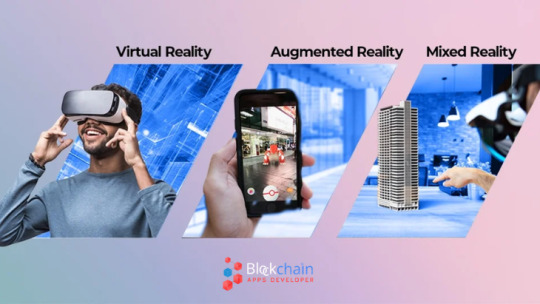
In the realm of digital transformation, BlockchainAppsDeveloper emerges as a trailblazer, offering cutting-edge VR and AR development services that redefine how we perceive and interact with the world. As a renowned VR development company and AR development company, we harness advanced technologies to craft immersive experiences that captivate and inspire.
VR Development: Crafting Virtual Realities
BlockchainAppsDeveloper is the top VR development Company, utilizing state-of-the-art technologies such as virtual reality headsets, 3D modeling, and interactive simulations to build immersive virtual worlds. Our VR solutions transport users to new dimensions, whether it's exploring fantastical realms in gaming, simulating real-world environments for training purposes, or providing interactive virtual tours for businesses.
AR Development: Enhancing Real-world Experiences
As an AR development company, BlockchainAppsDeveloper excels in blending digital and physical realities seamlessly. Augmented reality overlays digital content onto the real world, enhancing experiences across various industries. Our AR solutions range from engaging interactive marketing campaigns to innovative educational tools that make learning captivating and intuitive.
Immersive Experiences for All Industries
Immersive experiences have the power to captivate and engage audiences on a whole new level. With BlockchainAppsDeveloper's VR and AR development services, businesses can unlock unprecedented opportunities. From enhancing customer experiences with interactive product showcases to revolutionizing training programs with lifelike simulations, VR and AR technologies offer endless possibilities across industries.
Innovating for Tomorrow's Realities
At BlockchainAppsDeveloper, we remain at the forefront of innovation in VR and AR development, constantly pushing boundaries and exploring new frontiers. Our team combines creativity, technical expertise, and a deep understanding of client needs to deliver solutions that exceed expectations and drive meaningful results.
Join Us on the AR and VR Journey
Whether you're looking to create immersive VR experiences or want to leverage AR to enhance real-world interactions, BlockchainAppsDeveloper is your trusted partner. Join us on the AR and VR journey as we continue to shape the future of immersive technologies, one transformative experience at a time.
BlockchainAppsDeveloper doesn't just develop AR and VR solutions – we create experiences that leave a lasting impact. Explore the endless possibilities of virtual and augmented reality with us. Are you ready to redefine realities? Let's innovate together!
#vr development company#virtual reality development company#virtual reality development services#vr development#ar development company#ar development#ar development services#augmented reality development company
0 notes
Text
Navigating The Mobile Application Development Landscape:Technologies Selection Strategies
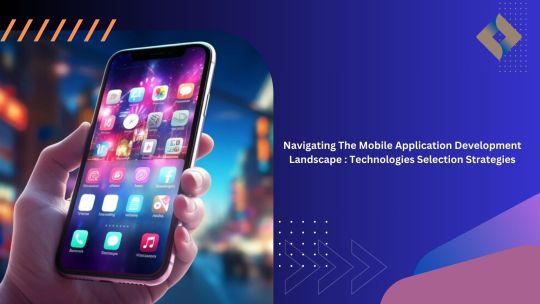
In the realm of Mobile app development, choosing the right programming language is akin to selecting the perfect tool for crafting a masterpiece. With the proliferation of smartphones, tablets, and computers, the demand for innovative and user-friendly applications has skyrocketed. Mobile, a leading player in the app development industry, understands the significance of selecting the best programming language to ensure the success of their projects. In this article, we delve into the intricacies of Mobile app development and explore the key factors involved in selecting the optimal programming language.
Understanding Mobile App Development
Mobile stands out in the competitive landscape of Mobile app development with its commitment to delivering cutting-edge solutions tailored to meet the diverse needs of clients. Whether it's developing mobile apps for iOS, Android, or cross-platform compatibility, Mobile's expertise shines through in every project they undertake. Central to their success is their adeptness at selecting the most suitable programming language for each app development endeavor.
Factors Influencing Language Selection
* Nature of the App: The type and complexity of the Mobile application play a pivotal role in determining the programming language best suited for the project. For instance, if the app requires real-time processing and high-performance capabilities, languages like Swift for iOS or Kotlin for Android are preferred choices.
* Target Platform: Understanding the platform for which the app is being developed is crucial. Mobile ensures compatibility and optimal performance by choosing languages that align with the respective platforms' guidelines and standards. This includes considering factors such as API support, performance optimization, and user experience.
* Team Expertise: Leveraging the skills and expertise of the development team is essential in language selection. Mobiloitte's proficient developers are well-versed in a plethora of programming languages, enabling them to make informed decisions based on project requirements and team capabilities.
* Community Support and Resources: Opting for languages with robust community support and extensive resources enhances the development process. Mobile prioritizes languages like Python, Java, and JavaScript, which boast vibrant developer communities, ample documentation, and a vast array of libraries and frameworks.
Best Programming Languages for Mobiloitte App Development
*Swift: Ideal for developing high-performance iOS apps, Swift offers modern syntax, safety features, and seamless integration with Apple's ecosystem, making it a preferred choice for Mobiloitte's iOS development projects.
*Kotlin: With its concise syntax, null safety, and interoperability with Java, Kotlin has emerged as the go-to language for Android app development at Mobile . Its versatility and robust features streamline the development process, resulting in feature-rich and scalable Android applications.
* Python: Renowned for its simplicity and versatility, Python is a favorite among Mobile app developers for backend development, data analysis, and machine learning projects. Its extensive libraries and frameworks accelerate development while ensuring code readability and maintainability.
* JavaScript: As the cornerstone of web development, JavaScript is indispensable in Mobiloitte's repertoire. Whether it's building interactive web applications or hybrid mobile apps using frameworks like React Native, JavaScript empowers Mobiloitte to deliver immersive user experiences across diverse platforms.
Conclusion
In the dynamic landscape of app development, selecting the best programming language is a critical determinant of success. Mobiloitte, as a leading mobile application development services and decentralized app development provider, strategically chooses programming languages tailored to each project's needs, ensuring optimal outcomes for native app development services, hybrid app development services, Android app development, iOS mobile app development, and cross-platform mobile development. With expertise spanning across mobile game development, AR/VR app development, and wearable app development, Mobiloitte leverages the power of cutting-edge technologies and community support to deliver innovative solutions that resonate with clients and users alike.
#mobile application development services#mobile app development company#decentralized app development#native app development services#hybrid app development services#android app development#ios mobile app development#cross platform mobile development#mobile game development company#ar/vr app development#wearable app development#mobile apps development
0 notes
Text
What is AR Technology And How It Helps In Customer Engagement
Getting your target's attention in the cutthroat world of marketing has turned into an art. With the decreasing effectiveness of traditional advertising strategies, companies are resorting to innovative technology to provide immersive and captivating experiences. AR, or augmented reality, is becoming a very useful tool that can change marketing strategies and have a long-lasting effect on consumers.
Even though augmented reality has been available for a while, most people are still unfamiliar with it, which suggests changes are on the horizon. Marketers have been using augmented reality's potential since the early 2000s. These days, though, they're using it to make distinctive experiences that boost customer loyalty to the company.
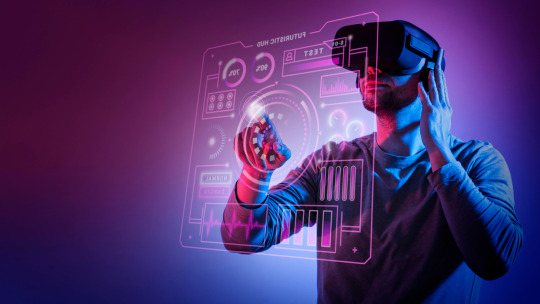
Use of Augmented Reality in Marketing
Digital content such as images, videos, and animations are projected over the real world using AR VR technology. It has been around for a while; in fact, the first uses of it were in science fiction films like Star Wars and The Matrix. But it's here at last. Additionally, marketers have quickly come to the conclusion that technology has the potential to create unique and alluring experiences that draw customers in deeper.
What does this entail for marketers, though? This implies that you can strengthen the connection between you and your audience by using augmented reality (AR). Your clients' sense of connection to your business and products might be strengthened if you give them a more engaging experience.
The Power of Immersive Storytelling
You need to employ narrative to keep your audience engaged. To do that, you might implement an augmented reality marketing plan. Marketers may create dynamic, interactive experiences from static photos or objects by utilizing augmented reality (AR). A basic print advertisement, for instance, may be brought to life on a smartphone by incorporating relevant product demos, 3D models, or interactive games. This narrative technique leaves an impression in addition to grabbing the audience's attention.
Enhancing Product Engagement
Imagine being able to electronically try on clothing before ever entering a physical store, or being able to see how furniture fits into your living room before making a purchase.
AR marketing has made this possible. Augmented reality marketing makes it possible for businesses to provide these kinds of experiences, which encourages customer interaction and decision-making. This increases consumer satisfaction and decreases return rates for e-commerce businesses.
Gamification for Brand Engagement
One of the greatest methods to boost client engagement with your business and keep them coming back for more is through gamification. Gamification is the process of adding aspects of game design to non-gaming apps in order to increase user engagement.
Augmented reality (AR), which blends digital and physical elements, takes gamification to a new level. To encourage consumers to engage with their products or visit physical locations, marketers may create challenges and games with augmented reality. These commercials thrill and foster loyalty in addition to providing entertainment for viewers.
Driving User-Generated Content
It makes sense that the social media era is among the most exciting periods in marketing history. Customers could not have told businesses about their experiences a few short years ago in the same manner that they can now.
Augmented reality (AR) marketing campaigns can motivate consumers to create and share their own experiences by utilizing interactive elements or AR filters offered by the business. This not only increases brand awareness but also fosters community and brand engagement.
Measuring Impact and ROI
The most beneficial feature of AR marketing is that it makes data collection and campaign performance measurement more effective. Marketers should monitor and keep an eye on user interactions, engagement rates, and conversion data. All of these may provide crucial data for the creation of upcoming campaigns. This data-driven approach guarantees the prudent use of marketing budget.
The Future of Marketing Is Interactive
As technology advances, AR marketing methods are likely to become ever more intricate and accessible. When brands are able to effectively bridge the gap between the real and digital worlds, there are many opportunities for them to interact with their audiences.
You can interact with customers directly and in a way that has never been possible before using augmented reality (AR) marketing. When using augmented reality into your marketing strategy, there are a few things to be cautious of.
Visit TECHVED to find out more about the advantages and disadvantages of augmented reality marketing.
Conclusion
Because augmented reality marketing techniques have access to so much data, they stand out for their capacity to draw in customers and promote engagement. They transform viewers from passive viewers into active participants by allowing them to participate in marketing storytelling. In this era of interactive branding, using augmented reality (AR) is not simply a fad; it's a strategic choice that could significantly impact and set your business apart. Are you ready to enhance your marketing efforts with augmented reality? The fascinating mobs of the future are what you are seeing.
#ar vr development#ar vr app development#ar vr app development company#ar/vr development company#ar vr development services#ar vr services
0 notes
Text
Is It Worth It to Focus on AR/VR as a Software Engineer?
An excellent chance for software engineers to work on cutting-edge technology and support a developing sector is to specialize in AR/VR. Applications for AR/VR technology already exist in a number of industries, including healthcare, education, and entertainment, and this trend is predicted to continue.
An uncommon skill set that is distinct from conventional software engineering is needed to specialize in AR/VR. In addition to programming languages, AR VR developers also need to be familiar with user experience design, AR/VR SDKs, 3D modeling, and animation. You can become a valuable asset to businesses that are creating AR/VR products and possibly make more money than regular software engineers by honing these specialized talents.
It's crucial to keep in mind that AR/VR is still a relatively new technology, and the market is always changing. The need for AR/VR developers may therefore change in the future. To be competitive in the employment market, it is crucial to keep up with the most recent trends and technology in AR/VR and to maintain improving your abilities.
Overall, for those who are enthusiastic about the technology and prepared to invest in their professional development, specializing in AR/VR as a software engineer can be a rewarding career path. Before making a decision, it's crucial to consider your interests and career goals along with the opportunities and challenges of the field.
#AR VR Services#ar app development services#vr development company#ar vr app development#vr app development services#ar vr development company#best ar vr companies#ar vr development services
0 notes
Text
AR VR Development Services | AR VR Development Company
Looking for AR VR Development Services? ThinkBI is a pioneering AR & VR Development Company, Our AR VR solutions can change your marketing emphatically.
0 notes
Text
Transforming Reality: Unleashing the Power of Augmented Reality Apps Development
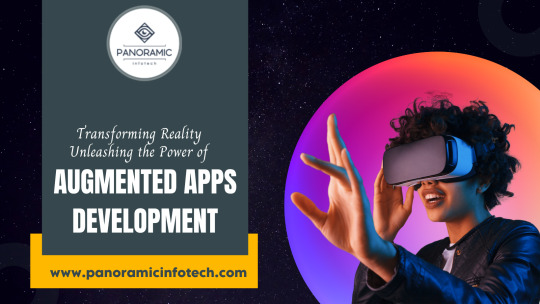
In a world where technology is rapidly evolving, one innovation stands out, transforming the way we perceive and interact with our surroundings – Augmented Reality (AR). Augmented Reality bridges the gap between the digital and physical realms, enhancing our everyday experiences through immersive applications. Let's dive into the captivating realm of AR apps development and explore the boundless possibilities it offers.
The Rise of Augmented Reality
Augmented Reality is not a futuristic concept anymore; it's a present-day reality that's reshaping industries and pushing the boundaries of what's possible. From gaming and education to healthcare and retail, AR applications are making their mark. The technology overlays digital information onto our real-world environment, creating a seamless blend of the virtual and physical.
Gaming Beyond Imagination
One of the most notable areas where AR has made a significant impact is gaming. Remember the global sensation of Pokémon GO? This game brought virtual creatures into our streets, parks, and neighbourhoods, captivating millions around the world. AR gaming immerses players in a dynamic, interactive experience that extends beyond the confines of traditional screens, providing a taste of the future of entertainment.
Revolutionising Education
In the realm of education, AR apps are transforming the way students learn. Imagine history lessons where historical figures come to life or biology classes where students explore 3D models of the human body. AR enhances engagement and understanding by making learning an interactive and visually stimulating experience.
Building the Future with AR Apps Development
The key to unlocking the full potential of AR lies in the hands of skilled developers. AR apps development requires a fusion of creativity, technical expertise, and an understanding of user experience. As the demand for AR applications continues to rise, developers have the opportunity to craft innovative solutions that redefine how we interact with the world.
Conclusion
Whether you're a business looking to enhance customer engagement or a developer eager to pioneer the next big AR experience, now is the time to embrace the transformative power of Augmented Reality. As AR technology continues to advance, we can only imagine the limitless possibilities that lie ahead, waiting to reshape our reality. Panoramic Infotech specialises in cutting-edge Augmented Reality App Development, seamlessly blending the digital and physical worlds to deliver immersive user experiences.
#AR/VR development services#AR/VR development company#AR/VR development company in USA#AR/VR development services in USA#Virtual Reality apps development#Augmented Reality apps development#hire ar developers#hire augmented reality developers
0 notes
Text
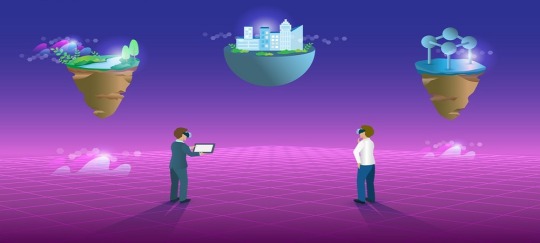
https://sapizon.com/ar-vr-development-company-in-dubai/
#arvr#ar vr development company#ar vr solutions#ar vr technology#ar vr app development services#metaverse#metaverse developers#metaverse development#dubai#united arab emirates
0 notes